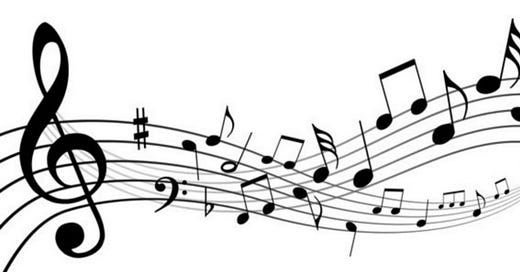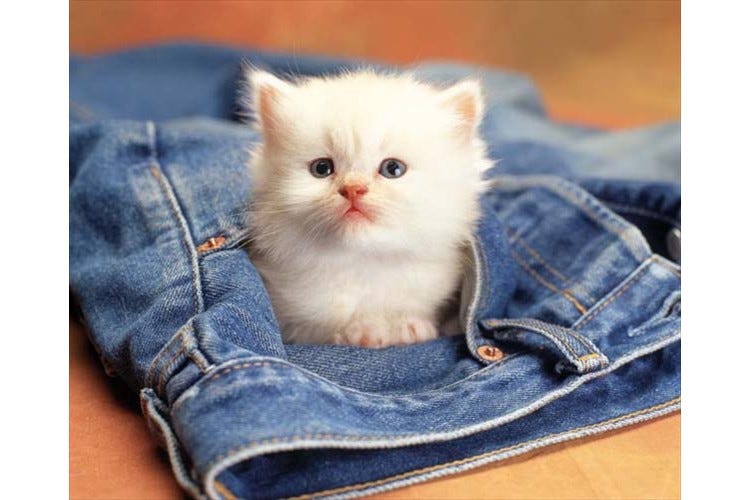Musicality in Dance
What is “musicality” in dance? People agree on many aspects, but not all…but I think we can all agree it’s always about showing music…
What is “musicality” in dance? People agree on many aspects, but not all…but I think we can all agree it’s always about showing music through our dance.
Musicality is…dancing to the tempo. The basic thumping beat in any disco or house or electro track. Or the 4/4 of hiphop and funk music. These beats in groups of twos, fours, and eights, are the reason we count off choreography with “5, 6, 7, 8”. This is the foundation upon which the groove and two-step is built. It’s the foundation for jacking in house, or the head bobbing of a club dancer, the tapping foot of someone listening to music on their headphones, or just the natural groove of a dancer as they bounce to the music. It’s something so fundamental, that most (though not all!) folks who have never taken a class in their life can still move to this basic rhythm without thinking.
Musicality is…dancing to the instrumental rhythms. Musicality is expressing the rhythm of notes from an instrument, through our bodies. Whether it’s the foundational boom-clap of popping music, or the melody of a singer or lead instrument, there’s rhythm in every instrument in our music. We can practice by clapping out these rhythms with our hands, to ensure what we hear from our hands matches what we hear from the music. If we just dance to rhythms, we sometimes fool ourselves into thinking we have the rhythm when we don’t, and forcing ourselves to clap or tap out a rhythm helps us improve our ability to capture those rhythms. We can practice our listening skills, trying to isolate out single instruments and rhythms in the song, and hold them, resisting the temptation to fall back into the flow of the stronger melodies. We can dig deeper into the song to find the softest instruments and rare instruments, that are never heard unless one searches for them, or a dancer draws them out to show them to you.
Musicality is….dancing to more than just the rhythm. Each instrument has a timbre, that differentiates it from other instruments playing the exact same melody. A flute sounds different than a trumpet sounds different from a violin. And in addition to capturing the timbre of the instrument, musicality is also capturing the way those instruments are played. High vs low pitches, drawn-out and legato vs short and staccato, strong and accented vs timid and subdued, or loud and fortissimo vs quiet and pianissimo. Musicality is how we choose to capture those differing sounds in our dance, and how we choose to represent them in our movement. Whether it’s using multiple levels, the physical size of the movements, the fluidity of the movement, or where in the physical space around us we choose to represent them, there are many ways to make the unique properties of the music clear to our audience, beyond just the rhythms.
Musicality is…showing multiple instruments. It can be as simple as switching off between multiple instruments in a call-and-response manner (typical of jazz-inspired music), representing different “voices” of instruments differently in our dance (hands vs feet, left vs right, big vs small, dainty vs strong, etc). Or it could be jumping between instruments, such as segueing from the end of a melody phrase back in into the underlying rhythm, that’s always waiting there underneath the music, ready to greet us when we return home.
Musicality is…showing multiple instruments, at the same time. The same way a pianist or drummer can move their two hands independently (and their foot pedals!), we can do the same in dance. This can range from simpler approaches, like keeping the basic beat in our groove while playing accents with other parts of our body, such as keeping a jacking groove while adding in layers of footwork. Or going more complex, capturing two different instruments simultaneously, in different parts of our body.
This is called independence in the drumming world, though we usually call it isolation in the dance world (though a different “isolation” than the one we use to refer to mime or robot movement, that isolates a part of our body movement-wise).
Musicality is…capturing the groove of the music, also called “sitting in the pocket”. It’s representing the underlying repetitive rhythms (usually drums or base), capturing them in your hips, chest, and neck movements naturally. It’s letting the default rhythms of your body capture the default rhythms of the music. It’s the foundation on which to build all the other levels of musicality and accents and moves, and it’s the foundation you can fall back to and look good doing when you aren’t “doing moves”.
Musicality is…the meaning and essence of a song. While much easier for native english speakers than foreigners, knowing the lyrics helps in many ways. Most obviously, there’s often the literal translation of the lyrics to movement, which is quite common with a lot of choreographers that are looking for inspiration for movement. But it can also be used quite well by freestyle dancers who know their music well and want to impress a crowd. Like any aspect of musicality, this can look boring and predictable when relied on too much, so it’s important to look beyond the lyrics.
What is the essence of the song? Is it about love, hate, depression, pain, longing, sorrow, happiness, gratefulness, or some other emotion? The lyrics can help here, though the nature of the song itself and how the musicians play it should reflect that emotion as well, and be understandable regardless of what language you natively speak. And so, your dance can capture that same emotion too. How do you represent that emotion in your dance? How does it affect and influence your movements, to make that step or move, tell us a story of love, anger, sadness?
Musicality is…being a musician yourself. Many of us think of musicality in terms of capturing every element we hear in a song. But musicality can also be us adding and contributing to the song, like a jazz musician improvising alongside a backing band, telling his story or reinterpreting other’s musical phrases in his own particular way. What do you want to say as a dancer? A musician isn’t limited to playing the rhythms that already exist in a band, and so a dancer shouldn’t be either.
Musicality is…knowing music. But there are many levels to this. Sure, knowing the song will help you dance to it better. You can learn to catch the random grunts or accents in a Michael Jackson or James Brown song, and impress the crowd with your mastery of the song. For someone who is focused on battling, you may choose to focus on memorizing all the important aspects of the major songs you are likely to hear in battles.
But good DJs will impress you with the depth and breadth of their collection in music, and you will not be able to memorize every song. The only way to improve on this is to start listening to an incredibly wide selection of music yourself. And once you start doing this, you’ll start to pick up on the natural essence of all music. You’ll start to pick up on common motifs in any funk song (like the 1-and-2 rhythms, or the importance of the 1) or house track (the importance of 8, 16, and 32 counts for major accents), and will be able to start anticipating songs without having ever heard them before, simply due to the natural rules of “funk” or “house” or “hiphop” that these songs obey simply by being of that genre. And so knowing music is knowing particular music songs, but it is also knowing music as a whole.
Musicality is…conducting. It’s being in charge and “on top” of the music. It’s telling the song what to do, and the song responding to your movements and direction. It’s creating the appearance that you are in control of yourself and the music.
Musicality is…being conducted. It’s listening to the music, as the music itself conducts your body to respond to the music. Its the opposite of conducting, but still very much just as musical. It’s creating the appearance that you are not in control, but the music instead channels through you and conducts your expression.
Musicality is…your response to music. How does this song make you feel? Is this your favorite track, that you love to dance to? Is this a dope beat you’ve never heard that makes you jump up and down? Does this song go in crazy directions musically and leave you wandering and searching? Does this song bring you back to a certain point or memory in your life? Can you show this in your dance? Help your audience hear and feel the song in the same way you do, and convey your emotional response to the music.
Musicality is…conveying how you hear and see music. Do you see colors when you hear music? (Synesthesia is dope, I wish I had it!) Do you see the instruments and noises laid out in space around you? How would you draw or paint the music? How does the music unfold in the space around you? What is in front of you or behind you, to the left or the right? Can you show us that by dancing and painting the music with your body?
Musicality is…choosing how you want to show this to your audience. What aspects of musicality appeal to you, and what do you want to show? You can’t show everything all the time, or it will overwhelm and confuse. What aspects do you want to prioritize in this song, or in your dance?Do you want your musicality to be loud and obvious, or subtle and nuanced? Are you teaching a lesson to your audience about the music with your dance, or are you talking to those int he crowd who are on your level? Are you making the musicality look effortless in your movement, or are you trying to show how difficult your musicality is?
Musicality is…turning off your brain, and doing all of the above, naturally. The more you think about the above, the more you interfere with the natural connection between the music and your dance. So practice all aspects of musicality, but work to make them natural and innate, that you can run on auto-pilot and trust that it’s still there. And then focus on another level in the music, or another deeper complex thing in your musicality, and trust the other aspects to work for you. And then once you’re at that level, turn your brain off and forget it all, and let the music flow through you in your dance. This is when you’ll most surprise yourself with what you uncover and present in your dance, and delight your audience as you delight yourself.
Musicality is…personal. It’s your own interpretation and expression of what you hear. These ideas and concepts have hopefully helped clarify the many possibilities of musicality, and hopefully helped you discover your own taste in musicality. Maybe even including definitions and concepts of musicality I’m not even aware of! I’d love to hear what else you think musicality is for you, so please share in the comments or write me!







